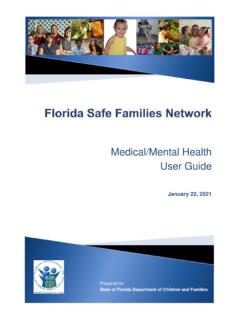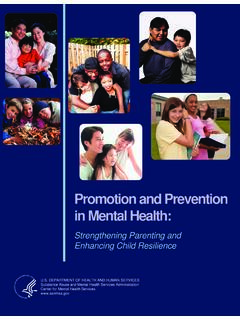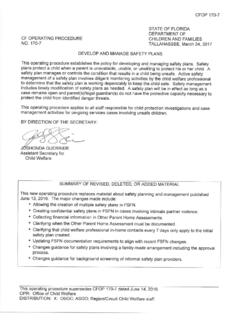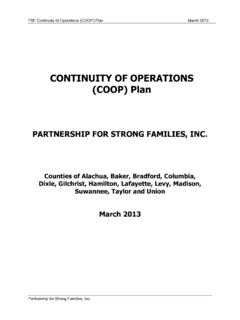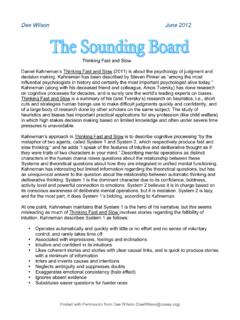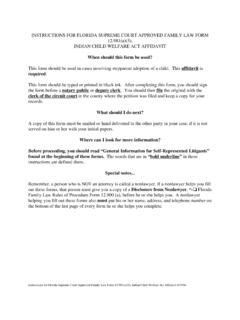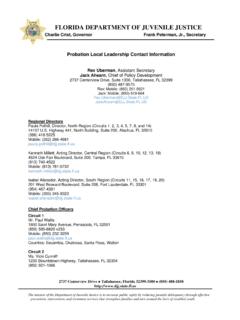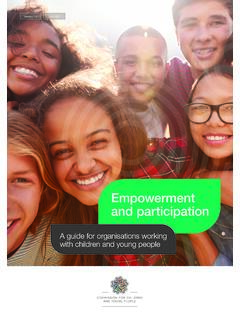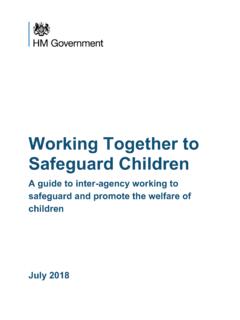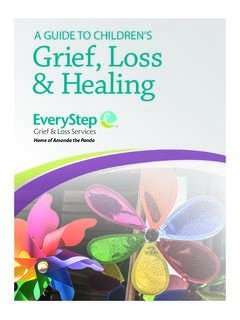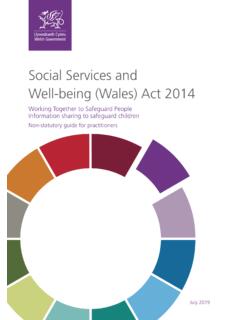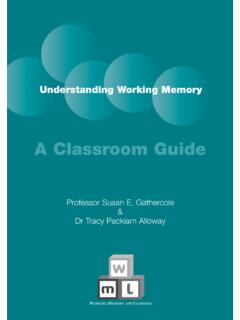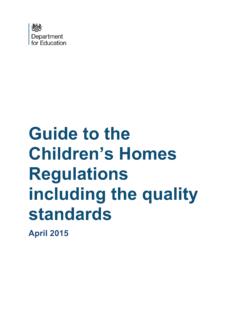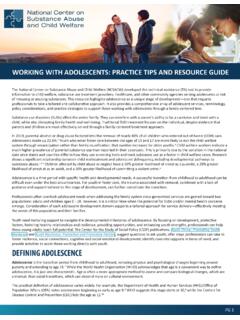Transcription of A Practice Guide for Working with African American ...
1 A Practice Guide for Working with African AmericanFamilies in the ChildWelfare SystemThe Role of the Caseworker in Identifying, Developing and Supporting Strengths in African American Families Involved in Child Protection ServicesApril 2006 Author, Maxie Rockymore, MSWT able of ContentsThis information is available in other forms to people with disabilities bycontacting us at (651) 282-5329 (voice). TTY/TDD users can call theMinnesota Relay at 711 or (800) 627-3529. For the Speech-to-Speech Relay, call (877) more information contact: 1 IntroductionThis Practice Guide was developed as a tool for social workers to help them address the systemic issue of the overrepresentation and racial disparity of African American children and their families involved in child protective services.
2 It is anticipated that this Guide will serve as a resource and reference manual for caseworkers (the person Working in the Practice of social work) as they engage African American families in effective service delivery. This Guide will not explore the historical context of racial disparities in detail because there are other resources for this information. This Practice Guide will not focus on the role of other systems (courts, schools, law enforcement, etc.) that may impact the lives of African American families involved in the child protection system. This Guide focuses on Practice and systemic change at the caseworker level. Caseworkers have a unique opportunity to engage and empower African American families on their caseloads.
3 The use of this Practice Guide should first be discussed within the child protection teams with supervisors to build consensus around meaning, concepts and possible implementation. As new, improved practices are implemented by caseworkers, it is hoped that they will be able to make a paradigm shift when engaging clients in case planning activities that will result in better outcomes for African American children and families, including an appropriate reduction in African American families on key element to this Practice paradigm shift is the caseworkers identification, development, support and documentation of strengths in African American families on their caseloads.
4 There is a need for a new Practice model that supports building on the family s existing strengths and skills. Caseworkers need to begin to support and Introduction 2encourage this indigenous knowledge and wisdom so that parents can expand and build on these resources (Berg, Kelly, 2000, ).Based on research and experience, this information was gathered and developed to assist caseworkers in: Augmenting or developing their best Practice skills in client engagementUnderstanding cultural differences between the caseworker and African American clientsAppreciating the differing world views of caseworkers and clients that may be shaped by family tradition, race, culture and socioeconomic factorsDeveloping new methods of engagement that can lead to improved child safety, well-being and permanency outcomes for African American children .
5 This Guide brings together the knowledge presented in research literature about Working with African American families, and synthesizes it into a reference Guide that will help child protective services caseworkers identify strengths in African American families and build upon them. Introduction 3 OverviewIt is important that the reason and/or need for a Practice paradigm shift in perceiving and Working on the strengths of African American families is identified. In the past, social work Practice focused on a deficit-problem-based model of interacting with clients. Current Practice , however, reflects a growing transition to a strengths-asset model of Working with clients.
6 This transition has been slow, and continues to evolve. Workers need to refocus and learn how to augment their assessment and client engagement skills towards strengths with all clients, but particularly African American clients who may comprise the majority of caseloads in some child welfare systems. Noted researcher Dr. Dorothy Roberts succinctly summarizes the state of African American children in child protective services in America:Black children make up nearly half of the foster care population, although they constitute less than one-fifth of the nation s removed from their homes, Black children remain in foster care longer, are moved more often, receive fewer services, and are less likely to be either returned home or adopted than other children .
7 (Roberts, 2002, )Minnesota child welfare data found that, as a percentage of the general child population, and in comparison to children of all races, African American children are five times more likely to be in out-of-home care. The data also revealed racial disparity for African American children at other key decision-making points along the child welfare case continuum (Minnesota Department of Human Services, 2002). In 2003, The Minnesota Department of Human Services (DHS) and Dr. Susan Wells, University of Minnesota School of Social Work, conducted a comparative case review study of African American children and Caucasian children in the child welfare system.
8 The goal of these case reviews was to examine case type, level and delivery of services for African American and Caucasian children . In most cases, there was not a statistical difference between African American and Caucasian children for case outcomes at assessment, case management, etc. Introduction However, there were differences in case characteristics during the assessment process; and race was found to interact with these case characteristics in a way that is predictive of case dispositions (Minnesota Department of Human Services, 2005). Case characteristics and race were predictive for African American mothers and children involved in domestic violence, substance abuse, on public assistance and for the age of the child.
9 Among several of the outcomes from this study and subsequent report was a recommendation to build and support family and community strengths of African American families (Minnesota Department of Human Services, 2005). It is recommended that this Practice Guide be used as a companion tool to the DHS study and 5 Case Practice Modalities to Identify and Support Strengths in African American FamiliesThe task of identifying strengths in African American families can be complicated by the lack of research and literature describing African American families in strength-based terms (Royse, Turner, 1980). Other researchers added Unfortunately, there is minimal research on African American families and especially African American family strengths (Littlejohn-Blake, Darling, 1993).
10 On the contrary, the majority of literature encountered spoke to the pathology and deficit-based views of African American families and family functioning. However, given the disproportionate numbers of African American children and families involved in child protective services, a new frame of reference and engagement must be developed. This frame of reference must focus on the strengths of African American families as a means of effective engagement and family intervention. The worker must document the strengths of Black families as they attempt to understand these families better (Royse, Turner, 1980). Defining Family StrengthsFamily strengths have been defined in many ways.

